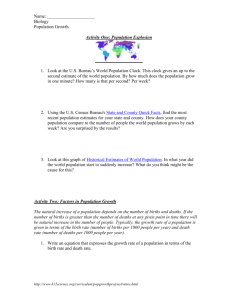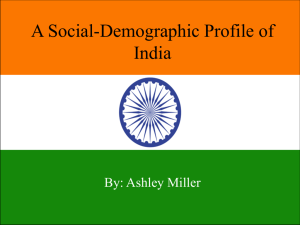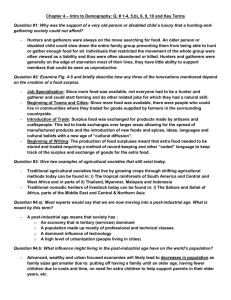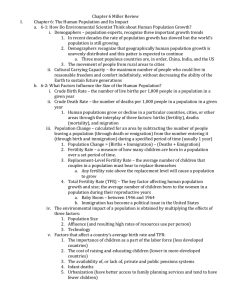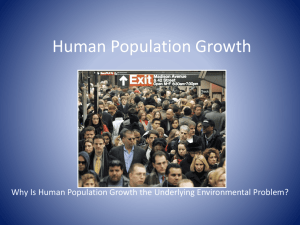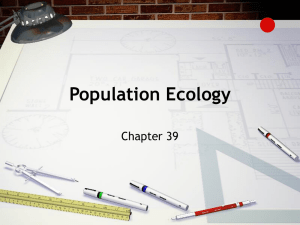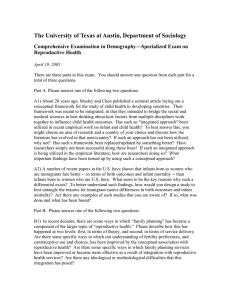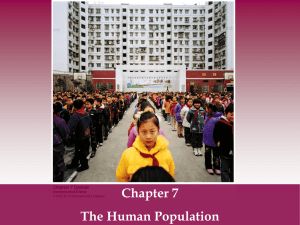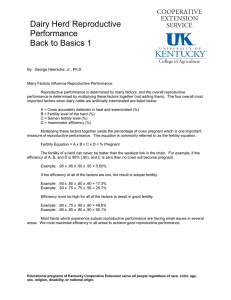Unit 3 homework KEY
advertisement
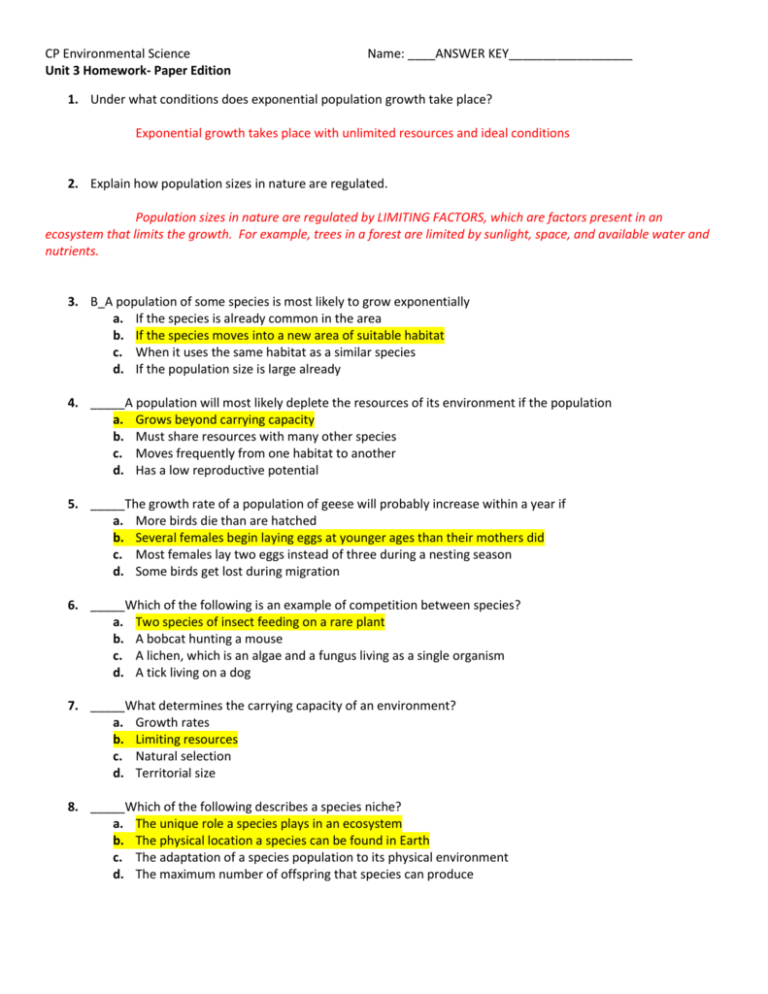
CP Environmental Science Unit 3 Homework- Paper Edition Name: ____ANSWER KEY__________________ 1. Under what conditions does exponential population growth take place? Exponential growth takes place with unlimited resources and ideal conditions 2. Explain how population sizes in nature are regulated. Population sizes in nature are regulated by LIMITING FACTORS, which are factors present in an ecosystem that limits the growth. For example, trees in a forest are limited by sunlight, space, and available water and nutrients. 3. B_A population of some species is most likely to grow exponentially a. If the species is already common in the area b. If the species moves into a new area of suitable habitat c. When it uses the same habitat as a similar species d. If the population size is large already 4. _____A population will most likely deplete the resources of its environment if the population a. Grows beyond carrying capacity b. Must share resources with many other species c. Moves frequently from one habitat to another d. Has a low reproductive potential 5. _____The growth rate of a population of geese will probably increase within a year if a. More birds die than are hatched b. Several females begin laying eggs at younger ages than their mothers did c. Most females lay two eggs instead of three during a nesting season d. Some birds get lost during migration 6. _____Which of the following is an example of competition between species? a. Two species of insect feeding on a rare plant b. A bobcat hunting a mouse c. A lichen, which is an algae and a fungus living as a single organism d. A tick living on a dog 7. _____What determines the carrying capacity of an environment? a. Growth rates b. Limiting resources c. Natural selection d. Territorial size 8. _____Which of the following describes a species niche? a. The unique role a species plays in an ecosystem b. The physical location a species can be found in Earth c. The adaptation of a species population to its physical environment d. The maximum number of offspring that species can produce CP Environmental Science Name: ____ANSWER KEY__________________ 9. _____Which of the following expressions is used to calculate the change in population size? a. Births + deaths b. Births + deaths + population c. Births – deaths d. Births – deaths + population 10. Explain the difference between density-dependent and density-independent deaths in a population. Density-dependent factors arise when populations increase in density and density-independent limiting factors occur regardless of the density of the population. For example, disease and lack of clean water will limit human populations in densely packed urban centers more so than a rural community. Natural disasters, like a flood, will limit populations regardless of whether it hits a city or rural area. 11. How can a population pyramid help demographers predict changes in a population over time? The general shape of the pyramid can inform demographers of the growth trend of a population. If it has a wide base and resembles a pyramid, the reproductive population is having lots of children, which in time will increase growth rate. Column-shaped diagrams show stable growth. Inverted pyramids show that reproductive-age residents are NOT having children, which could have severe implications as years go by. 12. Describe how the size and growth rate of the human population has changed in the last two hundred years. Both the size and growth rate have increased dramatically over the last two hundred years due to the advances in medicine, transportation, and utilization of fossil fuels for modern technology. 13. Define four properties that scientists use to predict population sizes. 1. age structure 2. survivorship 3. fertility rates 4. migration 14. Explain what we can predict about a population’s likely growth rates based on its current age structure. If a population has more young people than old people (pyramid-shaped), that country is most likely to be growing, since more children will have more children when they reach reproductive age. The opposite is also true- if there are more elderly people than children, the country’s population is declining because there will be less children to make more children when they reach reproductive age. 15. Describe three problems caused by human population growth. 1. shortage of fuelwood, 2. Poor water quality, and 3. Impacts on land CP Environmental Science Name: ____ANSWER KEY__________________ 16. Compare population growth in more developed countries to population growth in less developed countries. Fertility rates in the developed world are much lower than the developing world. Life expectancy is much higher in the developed world than the developing world. 17. _____Which countries have Type 1 survivorship? a. The most developed countries b. The least developed countries c. Countries in the second stage of the demographic transition d. Countries in the first stage of the demographic transition 18. _____A country in the second stage of the demographic transition may have all of the following except a. Increasing agricultural production b. Improving health care and education c. Decreasing population size d. Decreasing death rates 19. _____In this century, the world population is likely to a. Remain the same b. Continue to grow exponentially c. Decline rapidly because fertility rates are already below replacement level d. Stabilize after fertility rates fall below replacement level 20. What are the main reasons that life expectancy has increased worldwide? Life expectancy has increased due to better nutrition, healthcare, clean water, and safe sewage disposal. 21. What is the relationship between education and fertility rates in a human population? A population with more access to education have lower fertility rates for many reasons including: o Women have opportunities at careers, therefore have fewer kids o Women have children later in reproductive age, thus less children o Education allows families to plan the number of babies they have
